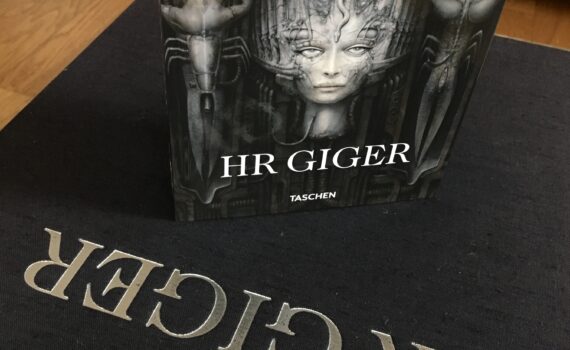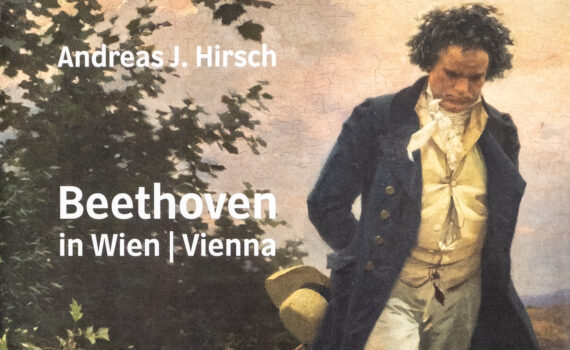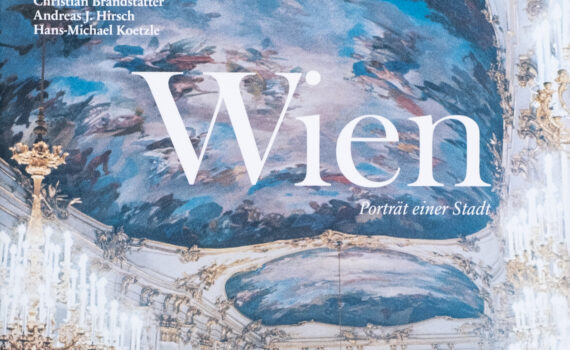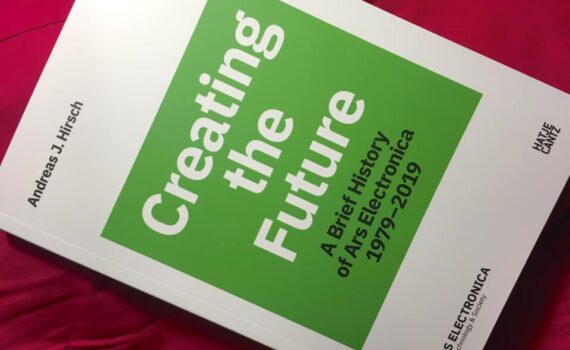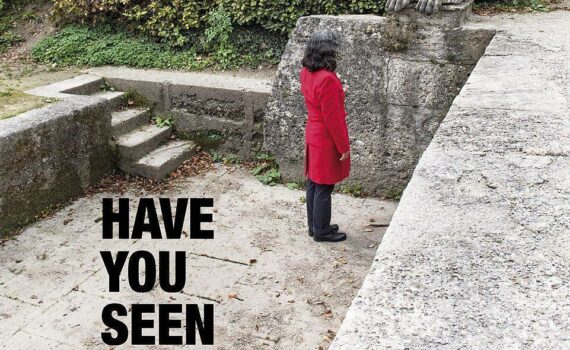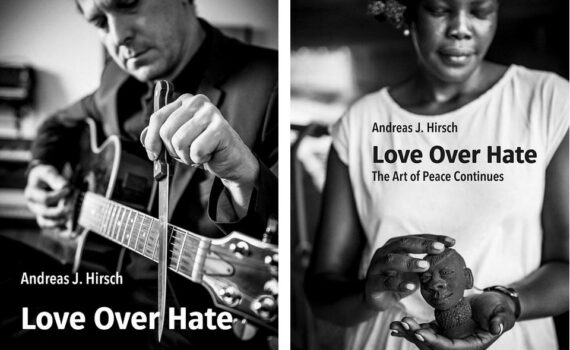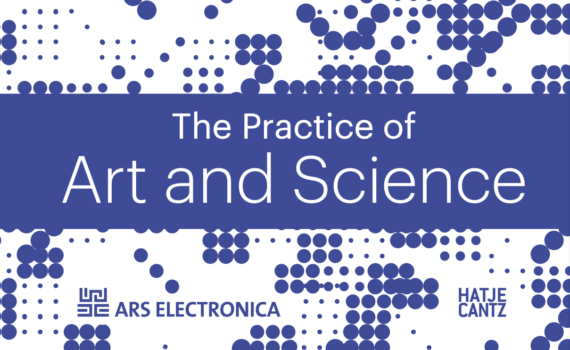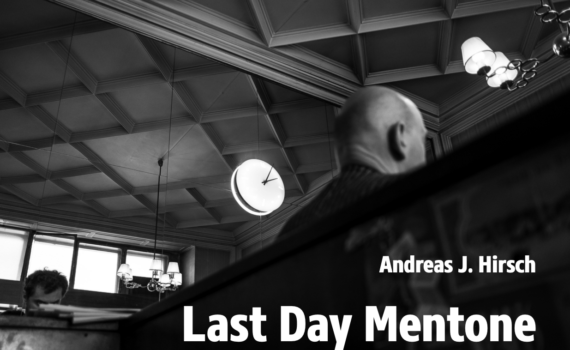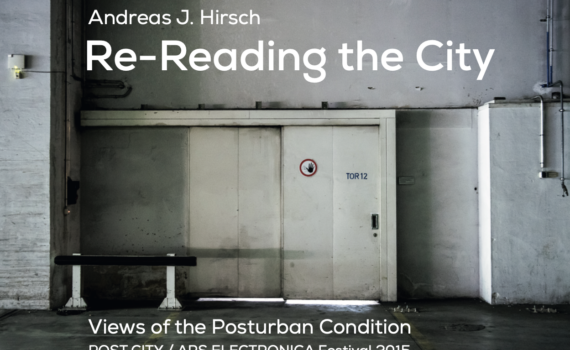Die Ausstellung „Chroniken des Unsichtbaren“ stellt Werke der Künstlerin Judith Nicolussi und des Fotografen Andreas J. Hirsch gegenüber. Die in ihrer materiellen Gestalt und Ästhetik durchaus unterschiedlichen Arbeiten treten dabei in einen kontrapunktischen Dialog, der zugleich die intensiven Querbezüge zwischen der Arbeitsweise und auch formalen Aspekten der beiden Werkgruppen spürbar macht. Andreas J. Hirsch – Notes from the Island. Photography „Notes from the Island (Notizie dall‘ isola)“, ein Projekt des Wiener Fotografen und Autors Andreas J. Hirsch, ist eine poetische und zugleich kritische Auseinandersetzung mit der Insel Sardinien. Das Projekt entstand in den Jahren 2016 und 2017 im Rahmen einer Artist Residency bei der Galleria Cult in Alghero und Bosa mit Dr. Valentina Piredda als Kuratorin. Arbeiten aus der Serie […]
A book with photographs and lyrics by Andreas J. Hirsch The Story of the Book While photographing at an old villa from the late fin de siècle on the hills above Vienna in 2016, in the final months before its demolition, Andreas J. Hirsch immerses himself in memories from the years of his youth in the 1970s, when he was a regular guest at that house. Combining photography and poetry, he reconnects with his early encounters with literature and music, reflecting on the transformations and experiences involved with coming of age, all interwoven with the distinct character of that very house, which is about to vanish. “Walking In Your Sleep” is an ode to collective and personal “lost time” as […]
“Reden wir über Fotografie (Let’s Talk About Photography). Honored having been entrusted with the editorship of this new book by the distinguished photo historian Hans-Michael Koetzle. The German Photographic Society (DGPh) honored Koetzle in October 2022 with their Cultural Award for his contributions to photography. The book contains essays and interviews by Koetzle from four decades and is published by KEHRER Verlag, Heidelberg.” Andreas J. Hirsch, editor From the announcement on the publisher’s website: “As an author and curator, the photo historian Hans-Michael Koetzle draws on countless personal encounters and extensive conversations with the great personalities of photography, as well as on meticulous archival research. He always keeps an eye on the contemporary historical background and cultural-historical context. His books, […]
“Hundertwasser in New Zealand is a richly illustrated and accessible account of the artist’s love of Aotearoa, his interaction with the people and land, and the influence these had on his work. In superb, lucid prose, eminent curator and writer Andreas J. Hirsch outlines the key stages of the artist’s life and his trajectory in New Zealand — including chapters on his commitment to nature, the Regentag in Aotearoa, and the art, philosophy and architecture he created here.” From the Media Release of: Andreas J. Hirsch, Hundertwasser in New Zealand – The Art of Creating Paradise, Oratia Books, Auckland, New Zealand, 2022 / Edited by The Hundertwasser Non Profit Foundation Vienna for the Hundertwasser Art Centre with Wairau Māori Art […]
“HR Giger created his own mythology .., encoding it into his paintings like DNA. In his work, he created a pictorial history that will be read as myth in a future whose proximity or distance we cannot yet ascertain. Until then, Giger’s art tell us something about a possible future of humankind that we can only surmise from the changes taking place in ourselves.” Andreas J. Hirsch, Chapter III – A Restless Classic, in: Hans Werner Holzwarth (ed.) / Andreas J. Hirsch (author), HR GIGER, Taschen, Cologne, 2016/2021
“It is an institution like no other, with an eventful history of 25 years now behind it. Compared with the common academic or industry research and development lab, this unit is rather small, comprising a staff of a mere three to five dozen people. It is neither an academic institute nor a corporate department, but a hybrid of artistic atelier and research laboratory. And there is a special third element, a philosophical and profane form of modern “alchemy,” which allows for the team at the “Futurelab” to also be considered as “Alchemists of the Future.” In fact, the people working there embody that fruitful dialogue between art and science, which often leads to astonishing and unconventional results. An ongoing dialogue […]
“A phantom is roaming around the world, visible at certain points, but mostly hidden from plain sight, moving stealthily into every area of life and work, and into every private recess. It comes in the guise of the epitome of progress, promising increased efficiency and profit to some, absolute control and power to certain others, and commodities to the masses. Some see it as the harbinger of doom for humankind, a Pandora’s box of self-destruction now opened and impossible to close again. Artists are attracted by this phantom, begin exploring its profoundly alien behavior, and experience its invasion of even the most exclusive realms of artistic creation, so far deemed to be one of the last reserves of what makes […]
“Life and work of Ludwig van Beethoven are surrounded by a myriad of legends and fictitious stories, of heroic and idealistic accounts and attempts to possess him. Beethoven’s lifetime at the turn of the 18th to the 19th century may – a good two hundred years later – seem alien and remote, and yet a lot of it might seem surprisingly familiar and timeless today. Persistent and serious research as well as courageous and inquisitive artistic approaches shed more and more light on Beethoven’s life, opening up new avenues to his music.” Andreas J. Hirsch (author and photographer), Beethoven in Vienna, Edition Lammerhuber, Baden / VBW, Vienna, 2019 Taking the Theater an der Wien as a starting point, the author […]
“The invention of photography was also quickly picked up in the Biedermeier idyll of Vienna. As early as 1839, Louis Jacques Mandé Daguerre sent from Paris some of his first images to Metternich, who showed them to the emperor and had them exhibited in the Art Academy. Metternich dispatched the physicist Andreas von Ettingshausen to Paris. Ettingshausen took photography lessons from Daguerre and acquired a Chevalier camera in Paris. The oldest known photograph of Vienna, which shows Michaelerplatz, originates from him. From this point on, the transformation of the city has been recorded in a burgeon ing production of photographs. The first fast portrait lens, made according to the precise calculations of Hungarian mathematician Josef Petzval, was produced by Viennese […]
“In 1979, long before anyone started speaking about a ‘digital revolution,’ in the unlikely setting of the small industrial town of Linz in Upper Austria, close to the Iron Curtain, three men—the director of a television station, a musician, and a scientist, who also wrote science fiction—launched a visionary festival for art, technology and society, giving it the Latin name ‘Ars Electronica.’” From: Andreas J. Hirsch, Creating the Future — A Brief History of Ars Electronica 1979–2019, Ars Electronica, Linz / Hatje Cantz, Berlin, 2019 “Creating the Future – A Brief History of Ars Electronica” follows the history of Ars Electronica from the pioneering days of its inception through the turbulent times at the advent of the digital revolution up […]
HAVE YOU SEEN THIS?A Photographic Odyssey Through Salzburg Exhibition at the Space for Photography at the Fortress / Traklhaus, Salzburg April – July 2019 Opening talk by photography-historian Margit Zuckriegl. Where is the woman in the red coat going? What makes her wander through Salzburg alone? Why does she refuse to re- gard the “postcard-views” of the city and stubbornly looks in the “wrong” direction? Is she fleeing from the camera? Does she look at those places in personal reminiscence? Or is her gaze directed at almost forgotten things or at the suppressed ones? Could it be worth searching ourselves for the things she actually might be seeing? – The series, which has been developed by Andreas J. Hirsch specifically […]
“At the beginning stood the observation that over the last couple of years we see a rising tide of hatred, dominating over love. Of course there has always been love and hate as part of human nature, but this time a delicate balance is getting lost. From small everyday situations to world politics we encounter hatred as the main motive everywhere. In order to contribute to the effort of making love stronger and winning over hate again, I asked artists to allow me to portrait them with an object of importance to them and to tell me about the meaning it carries related to their lives and work and to the topic of LOVE OVER HATE.” Andreas J. Hirsch, 2016 […]
“Encounters of art and science, or, more precisely, of artists and scientists, have enjoyed rapidly growing interest and attention in recent years. The romance of art and science has a long history, albeit a mixed one. Leonardo da Vinci (1452–1519), the artist and polymath active in the Florence of the Renaissance, still serves as the prominent example for the enormous creative potential flowing from the interactions of art and science. Since then science has been splitting up into numerous paths of ever deeper specialization, seeking knowledge within reductionist paradigms, and has largely abandoned free science in favor of research inside large organizations able to afford and maintain the ever larger and more refined instruments needed for it. Art—at the price […]
Soil Lives ! (German: Boden lebt!) The Live and Work of Annie Francé-Harrar Andreas J. Hirsch (Author) Language: German Kataloge des Oberösterreichischen Landesmuseums, Linz, 2016
The final Hours of the Cafè-Mentone in ViennaA series by Andreas J. Hirsch Exhibition at HERR LEUTNER, Vienna, November – December 2016 30 May 2016: The last opening day of the Cafè Mentone in Vienna. – When meeting at the Café Mentone, Ronnie Niedermeyer and Andreas J. Hirsch were shocked to learn that this was the closing day of the Café. As the news sank in, Andreas J. Hirsch started photographing along their ongoing conversation until they left the Café.
Exhibition at Ars Electronica Festival, Linz, AustriaSeptember 2015 Reassuming the role of the photographer as a kind of post-flaneur, Andreas J. Hirsch cast a highly personal view on the city of Linz in the summer of 2015 with the aim to reflect upon the posturban condition as such. Re-Reading the City follows hidden traces of an inner city behind the obvious one, the different cultural cities and their specific codes embedded in the same spaces. Two photographs from this series made it to the finalists for a postal stamp competition of the Austrian Post in cooperation with the newspaper Die Presse in the years 2018 and 2019.







